
















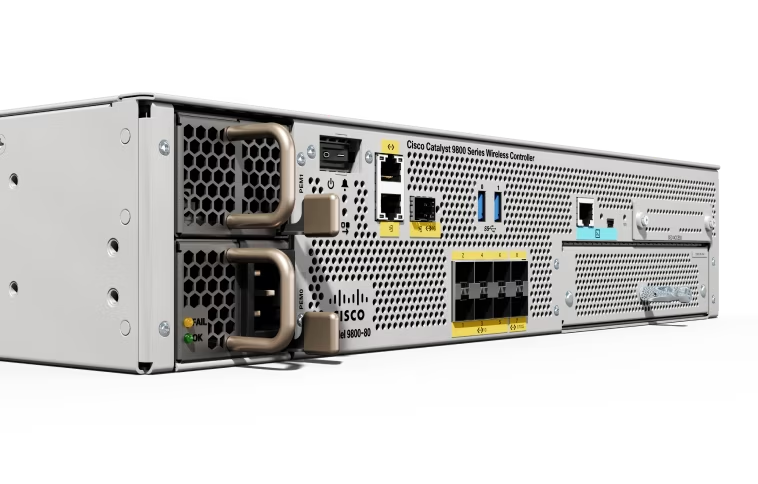

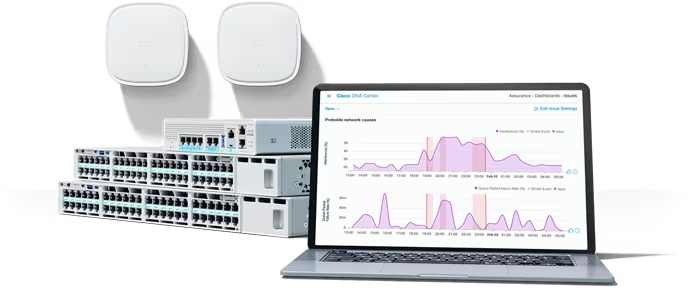

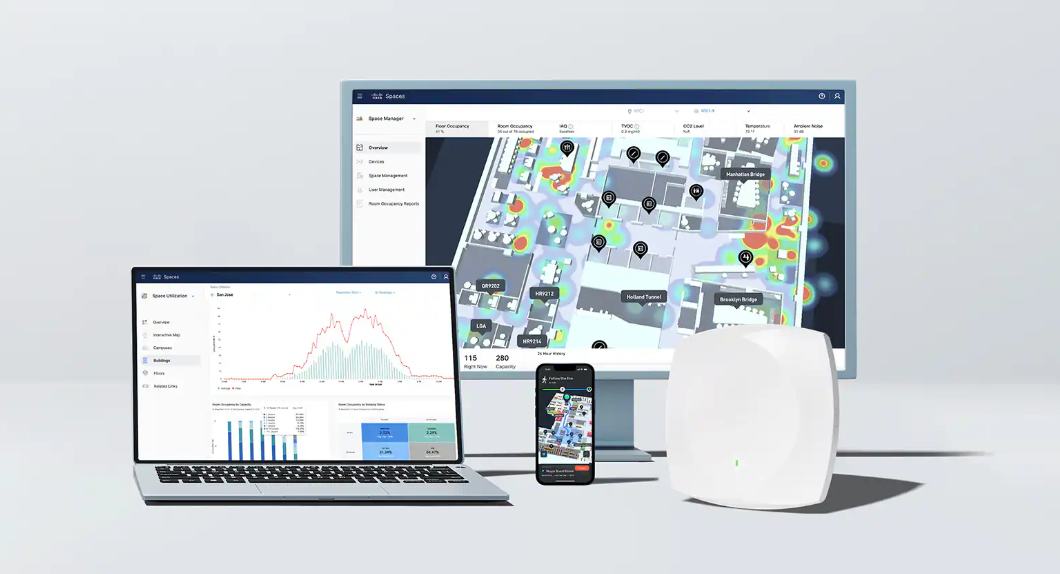

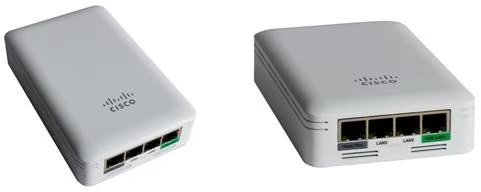
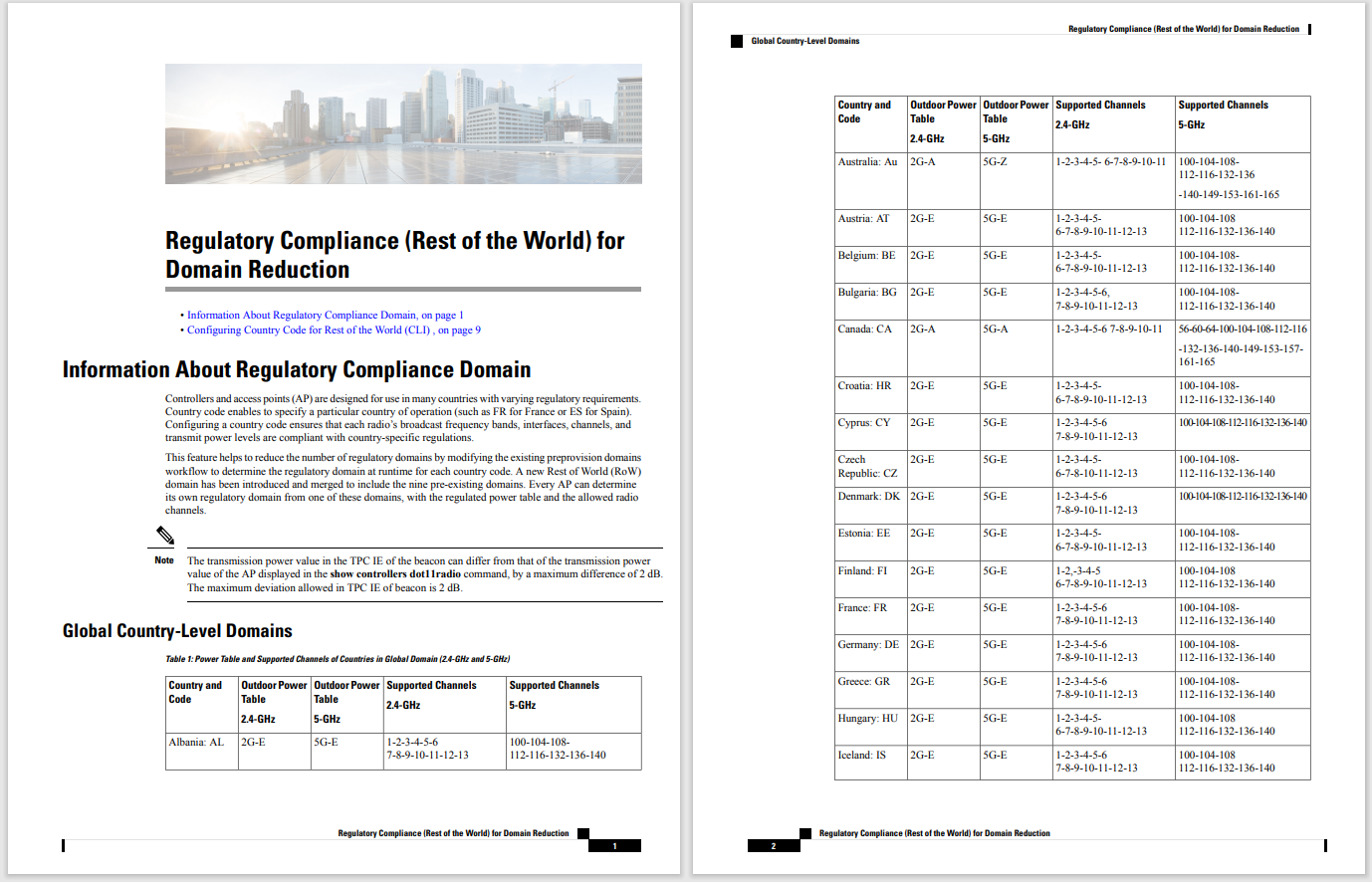
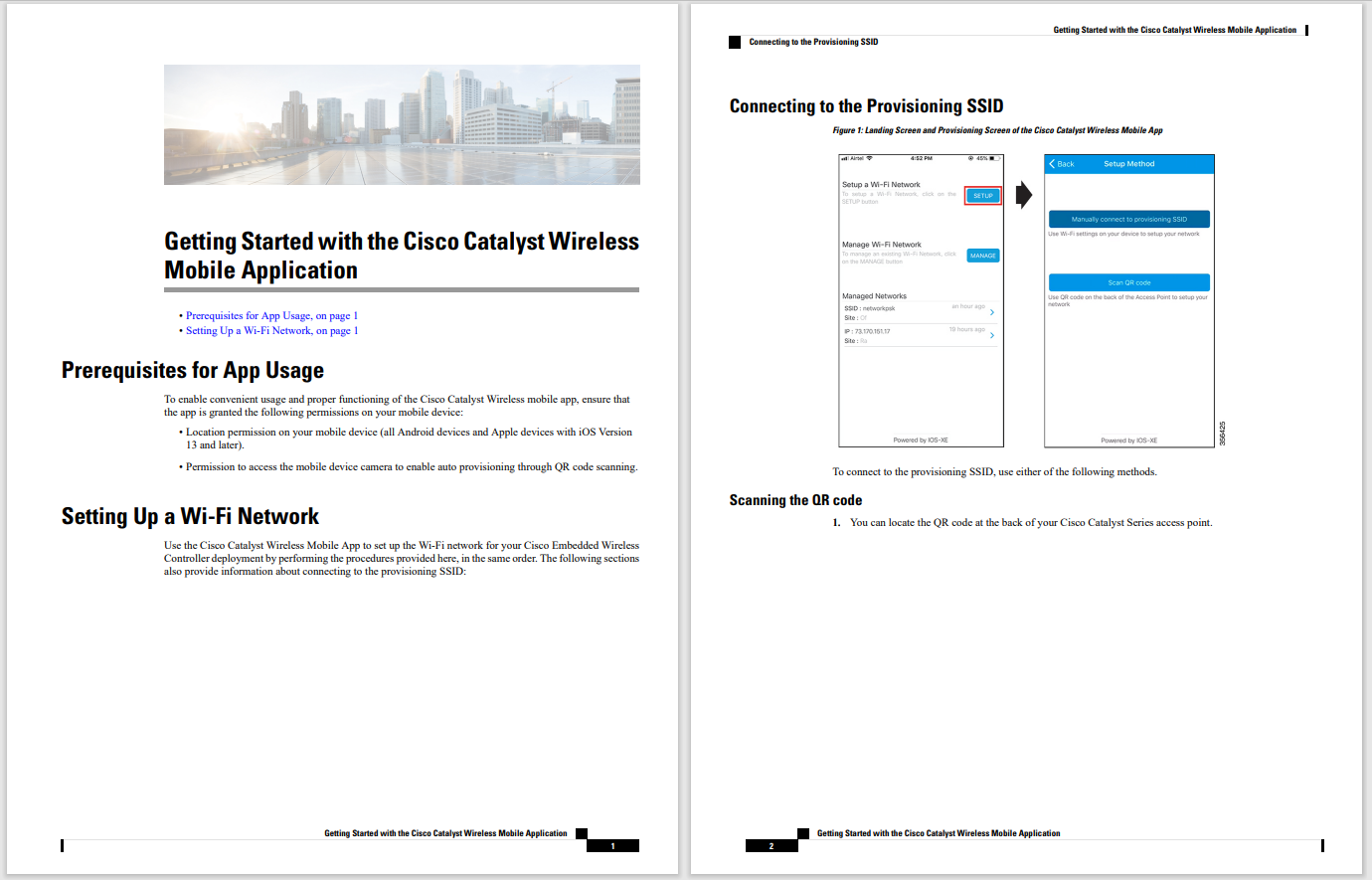

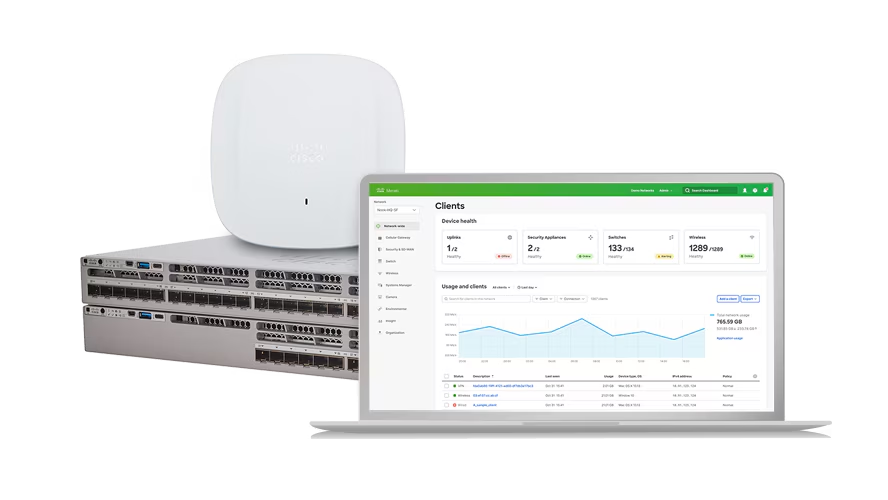
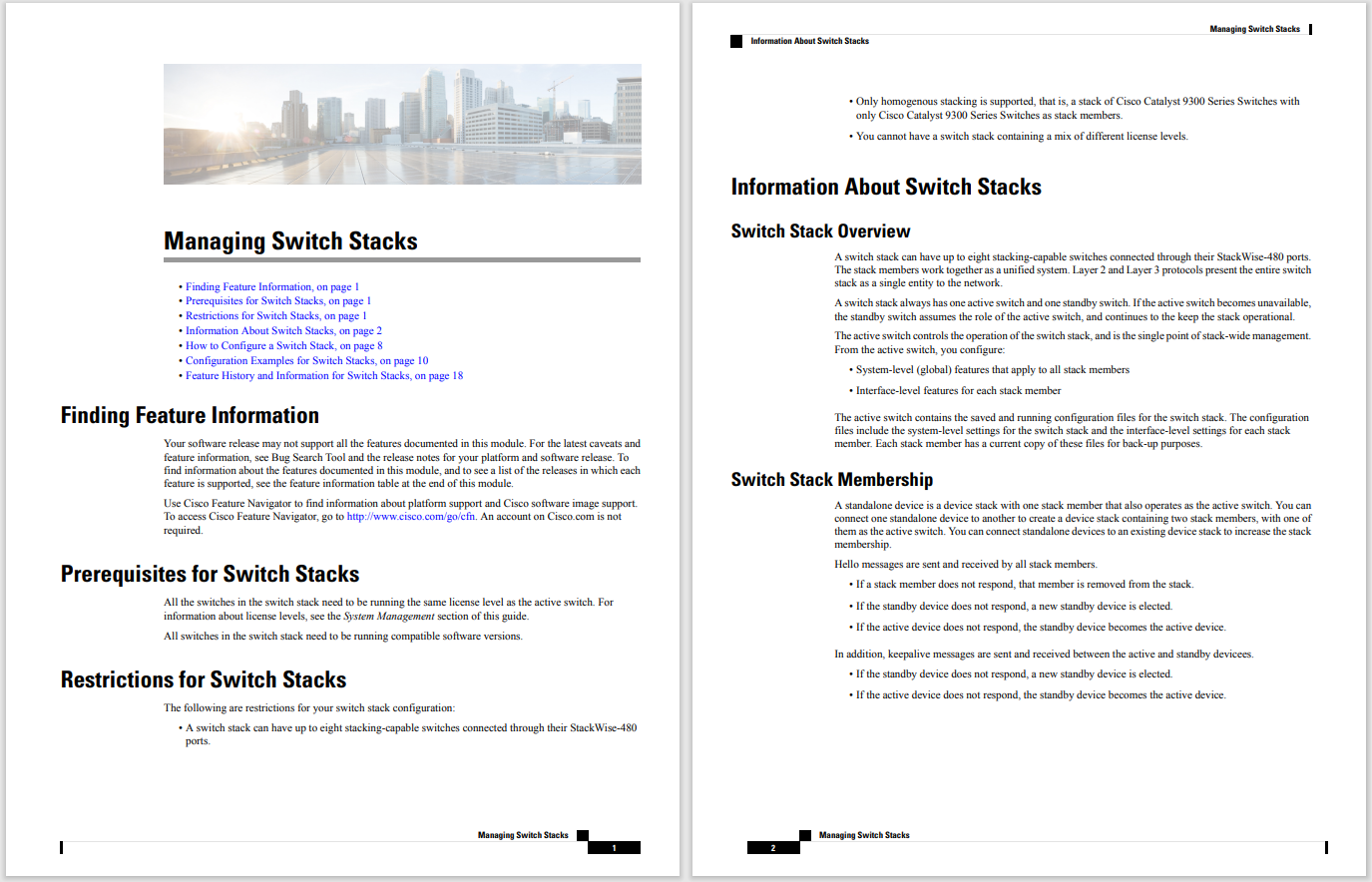
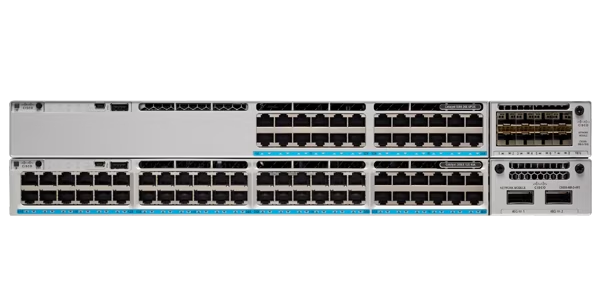
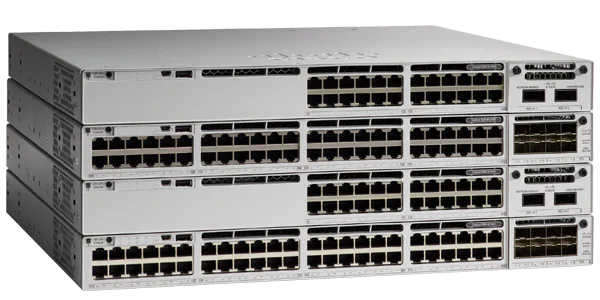

We often receive questions about fiber optic breakout patch cords for pluggable optic transceivers. If you're wondering the same thing, the first door to knock on is the fiber cable infrastructure provider for your network. We've posted cabling guides for some well-known providers, but there are certainly other options. These guides contain specific part numbers for their breakout patch cords and cassettes for use with many Cisco Optics transceivers.
Fiber optic breakouts are useful for many applications. Take for example a 400G port in a switch or router. A breakout structure could make that 400G port equivalent to a high density set of four 100G ports. Breakout connectivity also allows you to upgrade your network hardware one site at a time, so you don't have to take down the whole network all at once. You could also use breakouts for redundancy in your architecture.
The fundamental distinction of a breakout application is that it connects network devices (switches, routers, and servers) to other network devices containing ports of different speedwithout sacrificing port bandwidth. That last part about not sacrificing port bandwidth is key. You could still connect ports of different speed using an adapter. Or you could run a high speed port at a lower speed by filling it with a lower speed optic. For example, 40G QSFP+ optics can work in 100G QSFP28 ports. However, in both of these situations you under-utilize the bandwidth of the higher speed port.
 Example of breakout application.
Example of breakout application.With breakouts, you fully utilize port bandwidth. The most common breakout configuration involves a higher speed QSFP port that connects to four lower speed ports, either SFP lower speed QSFP. For example, Cisco's QSFP-100G-SR4-S can connect to four different 25G SFP28 ports with a fiber breakout patch cord (or cartridge) and four SFP-25G-SR-S pluggable optic modules. Similar breakouts are possible with some 40G QSFP+ and 10G SFP+ modules. See this animated tutorial video about 40G breakout to 10G.
For a more detailed explanation, see the whitepaper, "What are breakouts and how do you use them?" written by Craig Pasek.
Almost always, a pluggable optic transceiver that uses parallel fiber supports breakout. The Cisco Optics-to-Device Compatibility Matrix online tool shows whether the pluggable optic uses parallel or duplex fiber. Breakout is possible with both SMF (Single-Mode Fiber) and MMF (Multi-Mode Fiber) media type.
In the rare case of an exception, the tool notates if the pluggable optic or network device does not support breakout mode.
 Example of rare exception when breakout mode is not supported, indicated in pop-up message in the Cisco Optics-to-Device Compatibility Matrix.
Example of rare exception when breakout mode is not supported, indicated in pop-up message in the Cisco Optics-to-Device Compatibility Matrix.As a baseline reference, these are some of the Cisco pluggable optic transceivers that support 4-channel breakout configurations:
 Partial list of Product IDs for Cisco Optics that can be used in breakout configurations.
Partial list of Product IDs for Cisco Optics that can be used in breakout configurations.For a full list and mapping of which optics can connect to each other via breakout, see the Optics-to-Optics Interoperability Matrix. Below is an example.
 Cisco Optics-to-Optics Interoperability Matrix example. The far right column indicates whether a fiber optic breakout patch cord is needed.
Cisco Optics-to-Optics Interoperability Matrix example. The far right column indicates whether a fiber optic breakout patch cord is needed.If your fiber cable vendor doesn't have a standard breakout patch cord, and you request a custom design, you can use the diagram below as a guide. The patch cord doesn't depend on the data rate. The main consideration is whether the fiber type is SMF or MMF.
 Fiber breakout jumper pinout diagram for SMF. Note the 8 degree angle polish on the MPO connector end face.
Fiber breakout jumper pinout diagram for SMF. Note the 8 degree angle polish on the MPO connector end face. Fiber breakout jumper pinout diagram for MMF.
Fiber breakout jumper pinout diagram for MMF.Remember, fiber breakout patch cords or cartridges are for pluggable optic transceivers. If you're using an AOC (Active Optical Cable) such as QSFP-4X10G-AOCxM or copper cables such as QSFP-4SFP25G-CUxM, the breakout structure may be built into the cable because they are pre-terminated and plug directly into the QSFP or SFP type ports. Therefore, these cables do not need a separate fiber breakout patch cord.
Subscribe to the Cisco Optics blog!
Listen the Cisco Optics Podcast
Watch the Cisco Optics YouTube playlist
 Hot Tags :
#CiscoOptics
Cisco optics
#CiscoOpticsBlog
#CiscoOpticsTutorial
#CiscoOpticsReference
fiber breakout
MPO
Hot Tags :
#CiscoOptics
Cisco optics
#CiscoOpticsBlog
#CiscoOpticsTutorial
#CiscoOpticsReference
fiber breakout
MPO